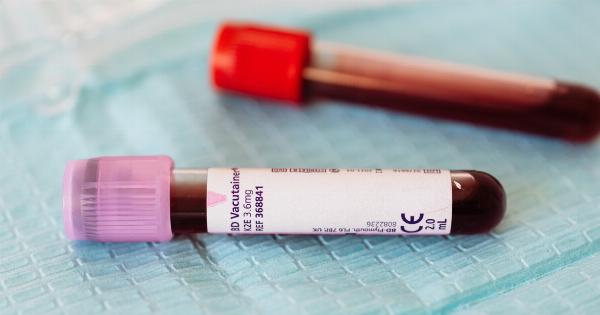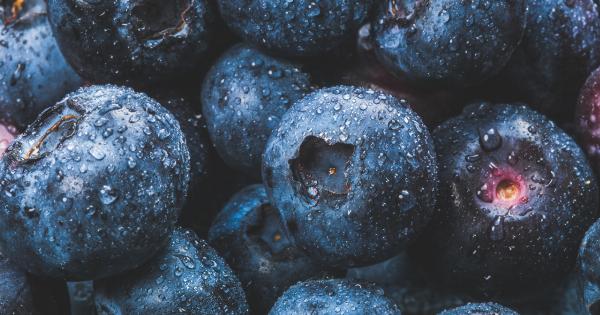When it comes to maintaining our overall health, few things are as important as blood clot prevention. Blood clots can be life-threatening and have the potential to cause serious health complications.
Identifying the vital ingredients that play a role in preventing blood clots is paramount in reducing the risk associated with them. In this article, we will delve into the mechanisms behind blood clot formation, explore various preventive measures, and uncover the crucial ingredient that can make all the difference.
Understanding Blood Clots
Before we proceed to explore blood clot prevention, it is important to gain a basic understanding of what blood clots are and how they form. Blood clots are gel-like masses formed by platelets and fibrin in response to injury or inflammation.
They help prevent excessive bleeding by sealing off damaged blood vessels.
However, blood clots can become problematic when they form inappropriately or fail to dissolve once the injury has healed.
These abnormal clots can obstruct blood flow and cause various health complications, such as deep vein thrombosis (DVT), pulmonary embolism (PE), or stroke.
The Risk Factors for Blood Clots
Several risk factors contribute to the development of blood clots. Understanding these risk factors can help individuals take appropriate preventive measures. Some common risk factors include:.
- Smoking
- Obesity
- Family history of blood clots
- Prolonged immobility
- High blood pressure
- Oral contraceptive use
- Pregnancy
- Underlying medical conditions (e.g., cancer, heart disease)
Blood Clot Prevention Measures
Fortunately, there are several effective measures that can significantly reduce the risk of blood clots.
These preventive steps can be incorporated into our daily lives, promoting better overall health and minimizing the chances of blood clot formation:.
1. Staying Active
Regular exercise and physical activity play a crucial role in preventing blood clots. Engaging in activities that promote good blood circulation, such as walking or swimming, can minimize the risk of blood pooling and clot formation.
2. Maintaining a Healthy Weight
Obesity is a known risk factor for blood clots. By maintaining a healthy weight through a balanced diet and regular exercise, individuals can reduce the chances of developing blood clots.
3. Quitting Smoking
Smoking damages blood vessels and disrupts normal blood flow, increasing the risk of blood clots. Quitting smoking not only reduces the likelihood of blood clots but also improves overall cardiovascular health.
4. Managing Underlying Medical Conditions
Individuals with existing medical conditions, such as heart disease or cancer, should work closely with their healthcare providers to manage these conditions effectively. Proper medical management helps reduce the risk of blood clot formation.
5. Staying Hydrated
Drinking an adequate amount of water throughout the day helps maintain proper blood viscosity. Well-hydrated blood is less likely to clot, making hydration an essential preventive measure.
6. Wearing Compression Stockings
For individuals at high risk of blood clots, such as those with a history of DVT, wearing compression stockings can help promote healthy blood circulation and minimize the risk of clot formation.
7. Taking Breaks from Prolonged Sitting
Prolonged sitting or immobility can contribute to blood clot formation. Taking regular breaks, stretching, and walking around during periods of extended sitting can help maintain healthy blood flow.
8. Avoiding Excessive Alcohol Consumption
Excessive alcohol consumption can lead to dehydration and increased blood viscosity, making it easier for blood clots to form. Limiting alcohol intake is essential for blood clot prevention.
9. Managing Stress
Chronic stress can negatively impact overall health, including blood clot formation. Engaging in stress-reducing activities, such as meditation or yoga, can help minimize the risk of blood clots.
10. Using Medications as Prescribed
For individuals prescribed anticoagulant medications, adhering to the prescribed regimen is critical in preventing blood clots. These medications help thin the blood and reduce the chances of clot formation.
The Vital Ingredient: Omega-3 Fatty Acids
While the aforementioned preventive measures are vital in blood clot prevention, one often overlooked ingredient in the battle against blood clots is omega-3 fatty acids.
Omega-3 fatty acids are essential fats that offer various health benefits, including reducing inflammation and promoting heart health.
Multiple scientific studies have shown that omega-3 fatty acids possess antiplatelet and antithrombotic properties, meaning they help prevent platelet aggregation and blood clot formation.
Incorporating omega-3-rich foods into our diet can significantly contribute to blood clot prevention.
Some excellent sources of omega-3 fatty acids include:.
- Fatty fish (salmon, mackerel, sardines)
- Flaxseeds and chia seeds
- Walnuts
- Soybeans and tofu
- Spinach and kale
Adding these foods to our regular diet can increase our omega-3 intake and help maintain healthy blood flow, reducing the risk of blood clots.
Conclusion
Blood clot prevention is crucial for maintaining good overall health and reducing the risk of life-threatening complications.
By adopting a proactive approach and incorporating preventive measures into our daily lives, we can significantly minimize the chances of blood clot formation.
This includes staying active, maintaining a healthy weight, quitting smoking, managing medical conditions, staying hydrated, wearing compression stockings, taking breaks from prolonged sitting, limiting alcohol consumption, managing stress, and using medications as prescribed. Additionally, incorporating omega-3 fatty acids into our diet can provide an extra layer of protection against blood clots. Stay vigilant and prioritize your health to enjoy a life free from the risks associated with blood clots.






























